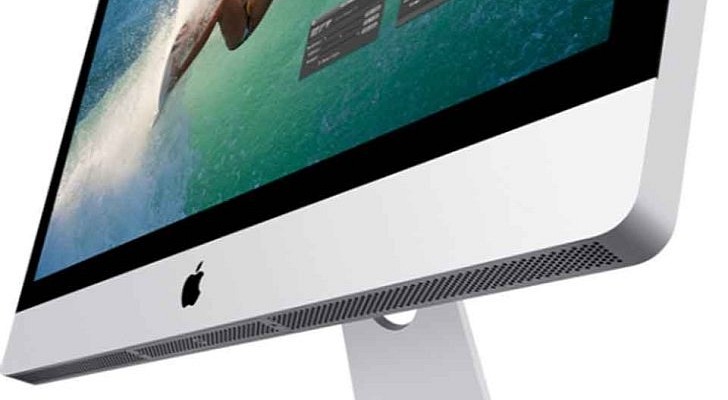Apple, Microsoft and the future of the desktop operating system
 Enough of the “desktop PC is dead” talk. Technology is about innovation, not eulogies.
Enough of the “desktop PC is dead” talk. Technology is about innovation, not eulogies.
Neither Apple nor Microsoft wish for the desktop PC to be “dead and gone”, as it is, and will still be, a very profitable market to be in. Perhaps not as much as the mobile market, and that is, yet, a matter of perspective.
The smartphone industry doesn’t play by the same rules as the desktop industry. What’s profitable for a manufacturer, might not be for the phone carrier who is actually selling the device. We may look at devices by the numbers and we will still see a market ruled by a double standard created by demand, and the constant struggle of seeing mobile devices as both products and shopping outlets, adding online resellers and retailers to the list of beneficiaries of the mobile market.
When reflecting on the profitability of the desktop platform, in comparison to smartphones, tablets and wearables, misrepresentation occurs in terms of “shopping speed”.
If we were to measure the speed and rate at which smartphone users purchase goods and services, it would be staggering, without question, compared to a desktop computer. When looked at it through the looking glass, we would notice that most transactions are processed for very small amounts, sometimes cents to the dollar, which suggests apps, games, themes, wallpapers, parking and toll, and other quick, miscellaneous purchases rapidly replacing the need to carry spare change.
Larger purchases are making their way into the smartphone shopping landscape, but a strong number of users still do prefer to buy expensive items on a larger screen, like a laptop or desktop PC, which is still a comfort zone. Case in point: how many people would buy, instantly, a physical item priced over five or six thousand dollars, without the ability to see a picture of it on a large screen?
This is how Apple and Microsoft are changing the rules of the game
Mac OS X Yosemite is already leading the way in how desktop operating systems are likely to look in the future, and looks are only a tiny part of it.
Virtuality is a concept that has worked itself into desktop operating systems for a long time, yet only now we see the usefulness, as integration and “synergy” is progressively building connecting strings between mobile and desktop devices.
A Virtual Assistant for your desktop
Virtual assistants, like Apple Siri, are conceptually “built” for the desktop, and it’s only by mere coincidence that smartphones and tablets adopted it first. Voice dictation on PCs actually pre-dates the use of voice commands on smartphones, with software pioneers like Dragon Naturally Speaking, enabling fairly accurate voice transcription and dictation on Windows, and later, on Mac OS.
Microsoft is not about to fall short with the soon to be released Windows 9, which some have already began dubbing as simply “Windows”. Microsoft Cortana is rumored to be part of the operating system, introducing a system-wide virtual assistant that is expected to work in a similar way as it does on smartphones.
Virtual Desktop support
Virtual desktops are no news, however they are also the least noticed feature on any desktop OS. Ironically, smartphone users make use of virtual desktops all the time, even if most don’t know it! Every page a smartphone users flip through to get to a new screen where more apps or widgets are available, is by every definition, a virtual desktop, created on the spot, by the device itself.
Software giants Microsoft and Apple have been learning plenty from this behavior, and it’s only a matter of time before Windows and Mac OS X implement an easier way for users to access virtual desktops natively.
Microsoft has already officially/unofficially announced that virtual desktop integration in Windows Threshold will be a completely customizable experience, offering different views and configurations, depending on the type of use, from work applications, to entertainment.
Live Communication
Just as Apple has already, and successfully implemented FaceTime on the Mac, Windows seems likely to do the same with Skype, and perhaps other further integrated services capable to offer a rich visual and voice communication experience.
The role of live communication will be just as pivotal as the presence of virtual assistants, on the desktop, especially for business users looking to enhance their productivity by making use of similar capabilities across devices. Home users looking for more affordable, and easier ways to communicate using their Internet connection will also find native integration of video communication on the desktop, of great use.
Home automation
Desktop devices, from Windows PCs to Apple Macs, were built for home automation, as they provide unmatched reliability and performance. They can be easily upgraded, and can be retrofitted for different uses, with the adoption of higher numbers of connected sensors and peripherals designed to monitor appliances, doors, windows, security systems, smoke alarms, and thermostats.
Apple understands this concept better than most, and consistently creates devices that drive the notion that there is always something new to expect. This is why, to those who think that the PC is dead, we can only say, in the words of Steve Jobs: “...there is one more thing...”.